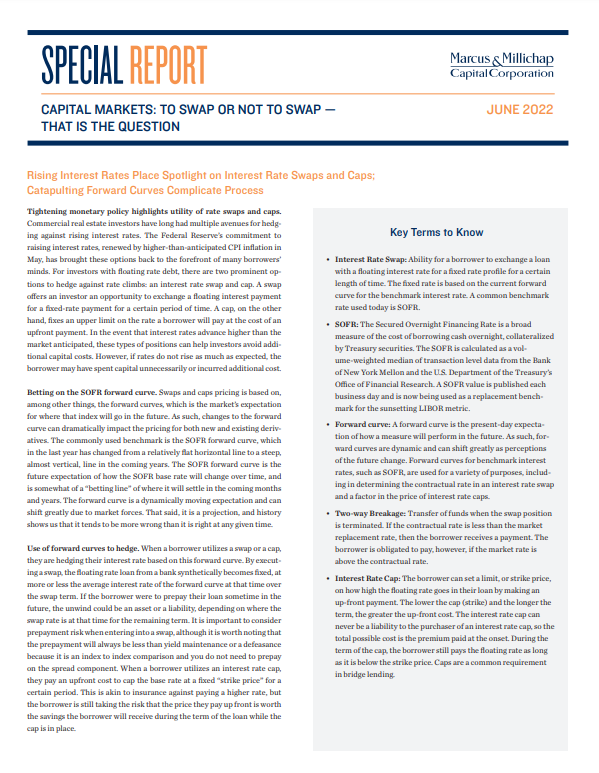RISING INTEREST RATES EMPHASIZE POTENTIAL VALUE OF INTEREST RATE SWAPS
Tightening monetary policy highlights utility of rate swaps and caps. Commercial real estate investors have long had multiple avenues for hedging against rising interest rates. The Federal Reserve’s commitment to raising interest rates, renewed by higher-than-anticipated CPI inflation in May, has brought these options back to the forefront of many borrowers’ minds. For investors with floating rate debt, there are two prominent options to hedge against rate climbs: an interest rate swap and cap. A swap offers an investor an opportunity to exchange a floating interest payment for a fixed-rate payment for a certain period of time. A cap, on the other hand, fixes an upper limit on the rate a borrower will pay at the cost of an upfront payment. In the event that interest rates advance higher than the market anticipated, these types of positions can help investors avoid additional capital costs. However, if rates do not rise as much as expected, the borrower may have spent capital unnecessarily or incurred additional cost.
Betting on the SOFR forward curve. Swaps and caps pricing is based on, among other things, the forward curves, which is the market’s expectation for where that index will go in the future. As such, changes to the forward curve can dramatically impact the pricing for both new and existing derivatives. The commonly used benchmark is the SOFR forward curve, which in the last year has changed from a relatively flat horizontal line to a steep, almost vertical, line in the coming years. The SOFR forward curve is the future expectation of how the SOFR base rate will change over time, and is somewhat of a “betting line” of where it will settle in the coming months and years. The forward curve is a dynamically moving expectation and can shift greatly due to market forces. That said, it is a projection, and history shows us that it tends to be more wrong than it is right at any given time.
* Sources: Marcus & Millichap Research Services; Chatham Financial; Federal Reserve; Moody’s Analytics

